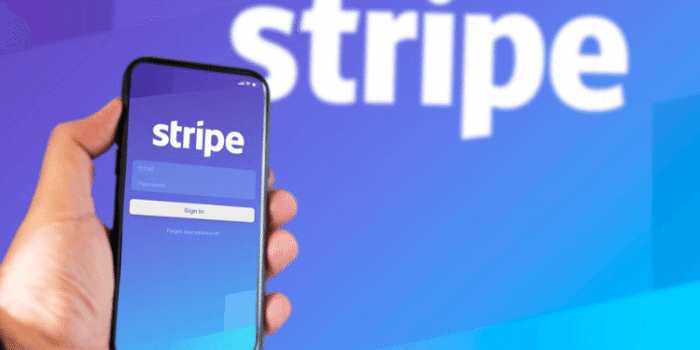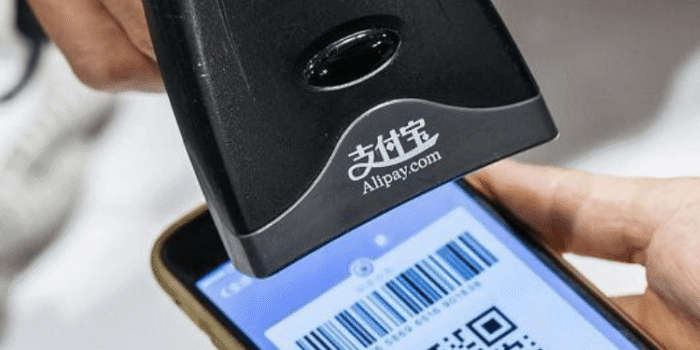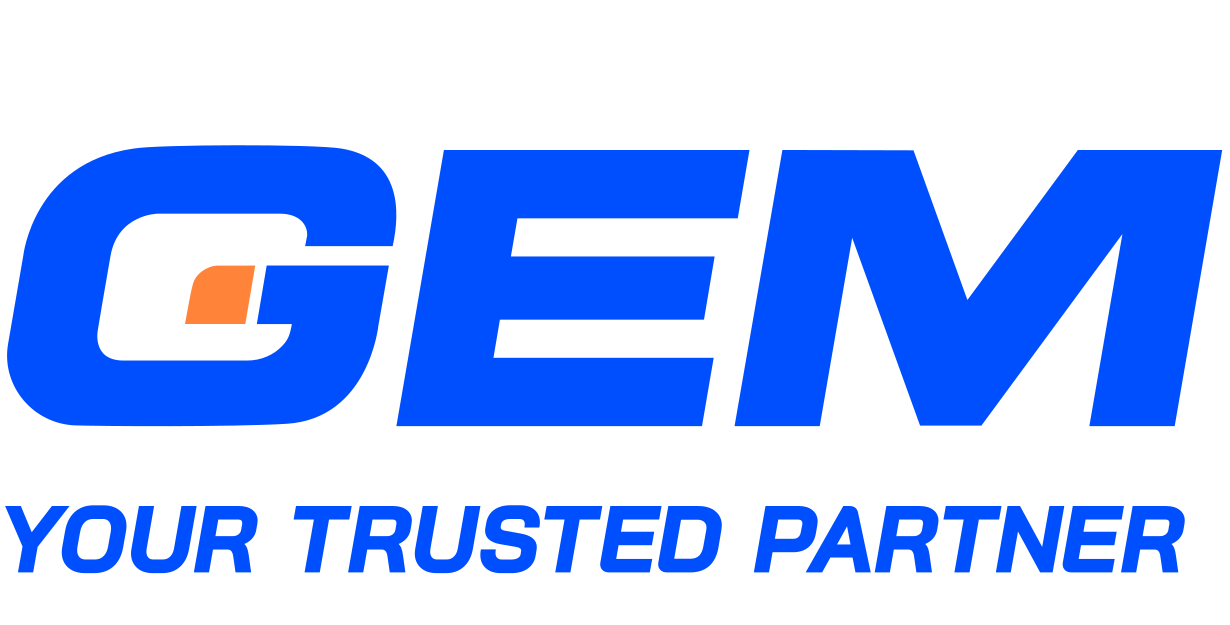Contents
Fintech apps are reshaping how individuals manage, move, and grow their money, driven by rising digital adoption and demand for real-time financial access. With the global fintech market projected to reach USD 320.81 billion in 2025 and a compound annual growth rate of 15.27% through 2030, the space is expanding fast, both in scale and complexity. As new entrants emerge alongside established platforms, users are navigating a crowded field of apps offering everything from mobile banking to micro-investing. This article outlines 15 fintech apps that stand out in 2025 for their relevance, scale, and role in shaping financial behavior.
What Defines a Fintech App?

At its core, a fintech app is a software application that delivers financial services through digital channels. What sets it apart is its ability to streamline traditionally complex or fragmented processes, such as payments, lending, investing, or budgeting, into a user-centric digital experience. These apps often operate outside of conventional banking frameworks, offering faster onboarding, intuitive interfaces, and tailored features powered by data.
While product categories vary, most fintech apps share several foundational characteristics:
- Mobile-first architecture: Designed primarily for smartphones, enabling 24/7 access and real-time interaction.
- APIs and open banking integration: Seamless connectivity with third-party platforms to aggregate data or initiate transactions.
- Automated decisioning: Use of algorithms or AI to deliver personalized recommendations or underwriting decisions.
- Compliance and security protocols: Adherence to regional regulatory requirements, including KYC, AML, and data protection standards.
- Scalable infrastructure: Built to support high transaction volumes and rapid user growth.
The rise of digital wallets, neobanks, and embedded finance has expanded the scope of what a fintech app can deliver. As the industry matures, the line between financial utility and lifestyle integration continues to blur, making functionality, trust, and user experience key differentiators.
Why Fintech Apps Matter in 2025
Fintech apps are positioned to play a central role in the financial services landscape of 2025. Their relevance is driven by three converging forces: rapid AI adoption, expanding digital payment usage, and shifting revenue dynamics in financial services.
AI deployment in fintech is accelerating, with the market expected to grow from $14.13 billion in 2024 to $17.79 billion in 2025. This shift supports more adaptive, real-time services across lending, fraud detection, and customer engagement capabilities that are increasingly embedded in consumer-facing apps.
At the same time, the digital payments segment continues to grow its footprint, reaching over 3 billion users in 2024 and projected to exceed 4.45 billion globally by 2029. This scale is reshaping expectations around speed, accessibility, and convenience in financial transactions – areas where fintech apps typically outperform legacy systems.
On the business side, fintechs are outpacing traditional banking in revenue growth, with forecasts indicating a 15% annual increase from 2023 to 2028, compared to just 6% in the traditional sector. This delta reflects both market appetite and operational agility.
In 2025, fintech apps are becoming primary channels for financial activity. Their influence rests not only in transaction volume, but also in how they redefine financial access and engagement. Transform Your Business with the Power of Technology Adopt AI, cloud solutions, and advanced analytics to reimagine your operations and stay ahead of the competition. Let’s future-proof your business together.
Key Features of a Fintech App
Most fintech apps are designed around usability, speed, and trust. While specific features vary by segment – payments, lending, wealth management- there are common building blocks that define a high-performing fintech product. These features reflect both user expectations and the technical capabilities driving the industry forward.
Key features include:
- Seamless onboarding: Digital KYC, biometric verification, and intuitive interfaces streamline the account setup process, reducing friction for new users.
- Real-time processing: Instant payments, account updates, and transaction alerts are core to user experience in fintech, especially in mobile-first markets.
- Data-driven personalization: Apps often use behavioral data and AI to tailor recommendations, surface insights, and automate recurring financial actions.
- Integrated payments and transfers: Support for peer-to-peer transfers, bill payments, QR code scanning, and cross-border transactions – accessible in just a few taps.
- Security and fraud detection: Biometric authentication, encryption, and machine learning help protect against unauthorized access and suspicious activity.
- Dashboard and analytics: Visual tools for tracking income, spending, investments, or credit scores help users make informed financial decisions.
- API connectivity: Many fintech apps are built on open banking standards, enabling integration with external accounts, wallets, or third-party services.
- Customer support automation: In-app chatbots, knowledge bases, and ticketing systems reduce response times and help scale service across large user bases.
Explore more: Fintech in 2025!
15 Fintech Apps Shaping the Future of Finance

Robinhood
With 10.8 million users, Robinhood has redefined how individuals access public markets. The platform offers commission-free trading for stocks, exchange-traded funds, and cryptocurrencies. Its clean interface and fast onboarding process have helped attract a younger demographic that values ease of use and immediate access. Robinhood’s approach highlights the impact of product simplicity and intuitive design in building loyalty in the investing space.
Chime
Chime reached 22.3 million users in 2023, making it one of the most widely used digital banking apps in the United States. It offers direct deposit with early access to paychecks, no monthly fees, and automated savings features. Its appeal lies in removing traditional banking barriers for users who are underserved or cost-sensitive. Chime’s growth reflects a broader demand for mobile-first financial services that prioritize user trust and operational transparency.
Revolut
Revolut serves more than 38 million users across multiple regions, offering digital banking tools that support international spending, currency exchange, and financial planning. Its multi-currency accounts and embedded payment options make it one of the most comprehensive platforms for users who transact across borders. Revolut’s expansion into insurance, crypto, and trading segments shows how fintech apps can scale by addressing both lifestyle needs and financial operations.
Stripe

Stripe’s mobile app supports businesses in managing payments, issuing refunds, tracking balances, and creating invoices. While the company does not publish user numbers for its app specifically, Stripe powers a large portion of global online transactions. The mobile dashboard complements its broader platform by giving operators real-time insight into their cash flows and customer activity. Stripe’s emphasis on developer tools and modular APIs has made it a foundational player in fintech infrastructure.
MoneyLion
MoneyLion has surpassed 19 million downloads and offers a suite of services that includes mobile banking, credit-building loans, investment tools, and financial education. Its model combines free access to core features with a subscription tier that unlocks personalized insights and premium services. This approach has allowed MoneyLion to diversify revenue while maintaining user engagement across multiple financial needs.
Nubank
With 99.3 million customers across Brazil, Mexico, and Colombia as of Q1 2024, Nubank is redefining digital finance in Latin America. The company’s focus on transparency, security, and regulatory alignment has positioned it as a trusted alternative to traditional banks in the region. Its mobile-first banking experience is built around no-fee accounts, fast transfers, and a user interface that simplifies financial management. Nubank’s rewards system and consistent product updates have helped it scale among both unbanked populations and digitally savvy users. Backed by global investors such as Berkshire Hathaway and Sequoia, the company illustrates how fintechs can build mass-market adoption while maintaining compliance in complex regulatory environments.
EarnIn
EarnIn addresses a specific gap in short-term liquidity by allowing users to access a portion of their earned wages before payday. The app does not charge interest or fixed fees but operates on an optional tipping model, alongside a Lightning Speed fee for instant transfers. While this approach appeals to users seeking flexibility without formal credit checks, it has also sparked debate due to the effective cost structure when tips and fees are combined. EarnIn’s rapid adoption reflects ongoing demand for income-smoothing tools, especially among hourly workers. It also raises important questions around transparency and the long-term viability of alternative wage access models.
Stash
Stash combines features of a robo-advisor, brokerage platform, and digital bank into a single interface aimed at novice investors. Designed to lower the barriers to entry, the app enables users to start investing with minimal amounts, offering fractional shares, automated portfolio management, and educational content. Its banking tools complement the investment experience, positioning Stash as an all-in-one financial platform for users building long-term financial habits. The platform’s appeal lies in its accessibility and focus on financial literacy, which has helped it engage users who may be underserved by traditional investment services.
PayPal
With 91.5 million core users, PayPal remains one of the most recognized names in digital payments. Its longevity is tied to both its scale and its ability to evolve. The platform now supports cryptocurrency transactions, peer-to-peer transfers, and buy-now-pay-later services, expanding its reach into adjacent fintech categories. Trusted by consumers and merchants alike, PayPal’s reputation for security and its integration into e-commerce ecosystems have kept it relevant amid rising competition. Its hybrid model, bridging legacy financial networks with new digital tools, offers a roadmap for incumbents adapting to a changing market.
OPay
Founded in 2018 and based in Lagos, OPay has grown into a prominent fintech player in Nigeria’s digital banking sector. The platform offers a wide range of services, including money transfers, airtime and data top-ups, cashback rewards, and a savings product with daily interest accrual. Its offering also includes a physical debit card and round-the-clock customer support. OPay’s success reflects the growing demand for mobile financial services in emerging markets, where infrastructure gaps and cash-heavy economies create opportunities for digital solutions. Its multi-service model and local market focus position it as a strong example of regionally anchored fintech innovation.
GooglePay
Google Pay has evolved from a simple NFC wallet into a multifunctional payments platform, offering peer-to-peer transfers, online checkout, in-store payments, and integration with transit systems. Its reach spans both developed and emerging markets, often adapting to local payment frameworks and banking regulations. In markets like India, where it operates via the unified payments interface (UPI), Google Pay has seen rapid adoption due to seamless bank integrations and cashback incentives. The app’s connection to the broader Android ecosystem also positions it as a default financial layer for millions of mobile users. For fintech operators, Google Pay illustrates how platform integration and localized strategy can drive scale in fragmented regulatory environments.
AliPay

Alipay, operated by Ant Group, remains one of the most entrenched digital wallets globally, with over 1 billion users. Originally designed for e-commerce payments on Alibaba, the platform has since expanded into credit scoring, microloans, wealth management, and insurance. Alipay’s super app model allows users to access a broad range of financial and lifestyle services from a single interface. Its dominance in China is built on tight integration with offline merchants, QR code ubiquity, and a closed-loop ecosystem that minimizes transaction friction. Alipay’s structure presents a compelling case for how embedded finance can be scaled across sectors beyond banking.
Venmo
Venmo, owned by PayPal, has become a cultural reference point in the U.S. for casual, peer-to-peer payments. It combines social features – such as transaction feeds and emojis – with a fast, mobile-first approach to sending and receiving money. While originally limited to friend-to-friend transfers, Venmo now supports merchant payments, debit cards, and even cryptocurrency transactions. Its success stems from simplicity, network effects, and its resonance with younger demographics. Venmo is a clear example of how social design elements can drive engagement in financial apps, particularly in markets where trust and familiarity shape usage.
UnionPay
UnionPay, China’s state-backed card payment network, has extended its reach well beyond physical cards. Its mobile app and digital wallet services now support QR code payments, contactless transactions, and integration with international merchants. While it competes with Alipay and WeChat Pay domestically, UnionPay plays a distinct role in cross-border transactions and financial inclusion in rural areas. Its infrastructure is widely accepted across Asia and increasingly in Europe and Africa. UnionPay’s expansion strategy demonstrates how legacy financial institutions can adapt to mobile-first trends by leveraging existing networks and government partnerships.
ShopeePay
ShopeePay, the digital wallet arm of Southeast Asia’s e-commerce platform Shopee, is designed to streamline in-app purchases, facilitate peer-to-peer transfers, and support offline retail payments through QR codes. Its adoption is especially strong in Indonesia, the Philippines, and Vietnam, where smartphone penetration and mobile commerce continue to grow. By embedding ShopeePay into its marketplace ecosystem, Sea Group has created a closed-loop environment that improves checkout conversion and increases user retention. ShopeePay’s growth highlights how payment solutions tied to commerce platforms can accelerate wallet usage while creating new monetization paths.
Can a Business Build Their Own Fintech App?
Building a fintech application is no longer reserved for tech giants or financial institutions. Businesses across industries are exploring how proprietary financial tools can unlock new revenue streams or improve customer retention. There are two primary paths to consider: in-house development or outsourcing. Each carries distinct implications for cost, speed, and control.
Building In-House
Developing a fintech app internally offers full control over the product roadmap, architecture, and integration decisions. This route may appeal to companies with robust technical teams and a long-term vision for owning every layer of the stack. It also allows for tighter alignment with internal infrastructure and proprietary workflows.
That said, fintech development requires more than just engineering talent. Regulatory compliance, data security, payment gateway integration, and scalability planning often demand specialized expertise. For many companies, the operational overhead of staffing, managing, and continuously upskilling an in-house team can slow down time to market and raise project risk.
Outsourcing to a Trusted Partner

For organizations looking to accelerate development without compromising on quality, outsourcing to a specialized technology partner can offer a more pragmatic route.
GEM Corporation is one such partner. We work with companies across a wide range of industries, including retail, manufacturing, logistics, healthcare, and financial services. BFSI is one of our key focus areas.
Our approach is designed to support clients through every stage of the fintech product lifecycle:
- Strategy & Consulting: We help define the business case, assess compliance obligations, and shape product architecture from day one.
- Custom App Development: Our teams build mobile-first and cloud-native fintech applications, with a focus on scalability, performance, and secure code standards.
- Testing & Quality Assurance: With services like Automation Testing and End-to-End Application Testing, we help ensure stability across every layer of the stack.
- Cloud Engineering: From infrastructure setup to migration, we design cloud environments aligned with fintech-specific performance and security demands.
- Data & AI: We support clients in building data platforms that drive better decision-making, whether through fraud detection models or real-time personalization engines.
With over 300 successful projects delivered globally, we understand both the technology and regulatory environments that shape fintech product delivery. We are a strategic partner committed to helping them launch resilient, compliant, and scalable financial solutions.
Choosing between building in-house and outsourcing often comes down to time, expertise, and long-term vision. For businesses without dedicated fintech teams, working with GEM offers a reliable route to execution, supported by a cross-border delivery model, deep industry experience, and a commitment to measurable outcomes. Bring your ideas to life faster than ever before Our agile solutions streamline workflows and cut time-to-market, helping you launch innovations quickly and confidently.
Takeaways
Building a fintech app demands a clear strategy, domain-specific knowledge, and thoughtful alignment with compliance and user expectations. Companies with mature digital capabilities may opt to build in-house, while others turn to external partners to tap into specialized expertise and accelerate delivery. Regardless of the path, the fundamentals remain consistent: a clear business case, a strong technology foundation, and the ability to navigate the financial ecosystem. As fintech continues to evolve, the ability to execute with precision will separate standout apps from the rest.
To discuss how your business can approach fintech app development with the right technical and strategic support, contact us.





